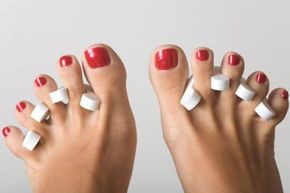A pregnancy that lasts 37 weeks is considered full term, but many pregnant women are ready to stop being pregnant and give birth already by about week 17. When the final days of the third trimester finally roll around (and especially the days that mark an extended third trimester), some moms-to-be are willing to try anything to induce labor naturally.
And who could blame them? By this point in the pregnancy, it's practically impossible to even sit down or stand up without a major act of will. Each day past the due date can make an expectant woman suspect that the life growing inside of her may in fact stay there forever.
Advertisement
When it comes to pregnancy and labor, there have always been tales of ways for women to induce labor: warm baths, spicy food, sex, nipple stimulation, enemas. Although there is very little scientific data to back any of these up, there's plenty of anecdotal evidence from women who have induced labor using such tactics. These beliefs go back as far as pregnancy does, with similar claims of support and naysaying for each of them.
We'll look at another purported method to induce labor: pedicures. Some women swear that their late-term pedicure prompted labor, while others had no such luck. So what's the real deal?
Advertisement

